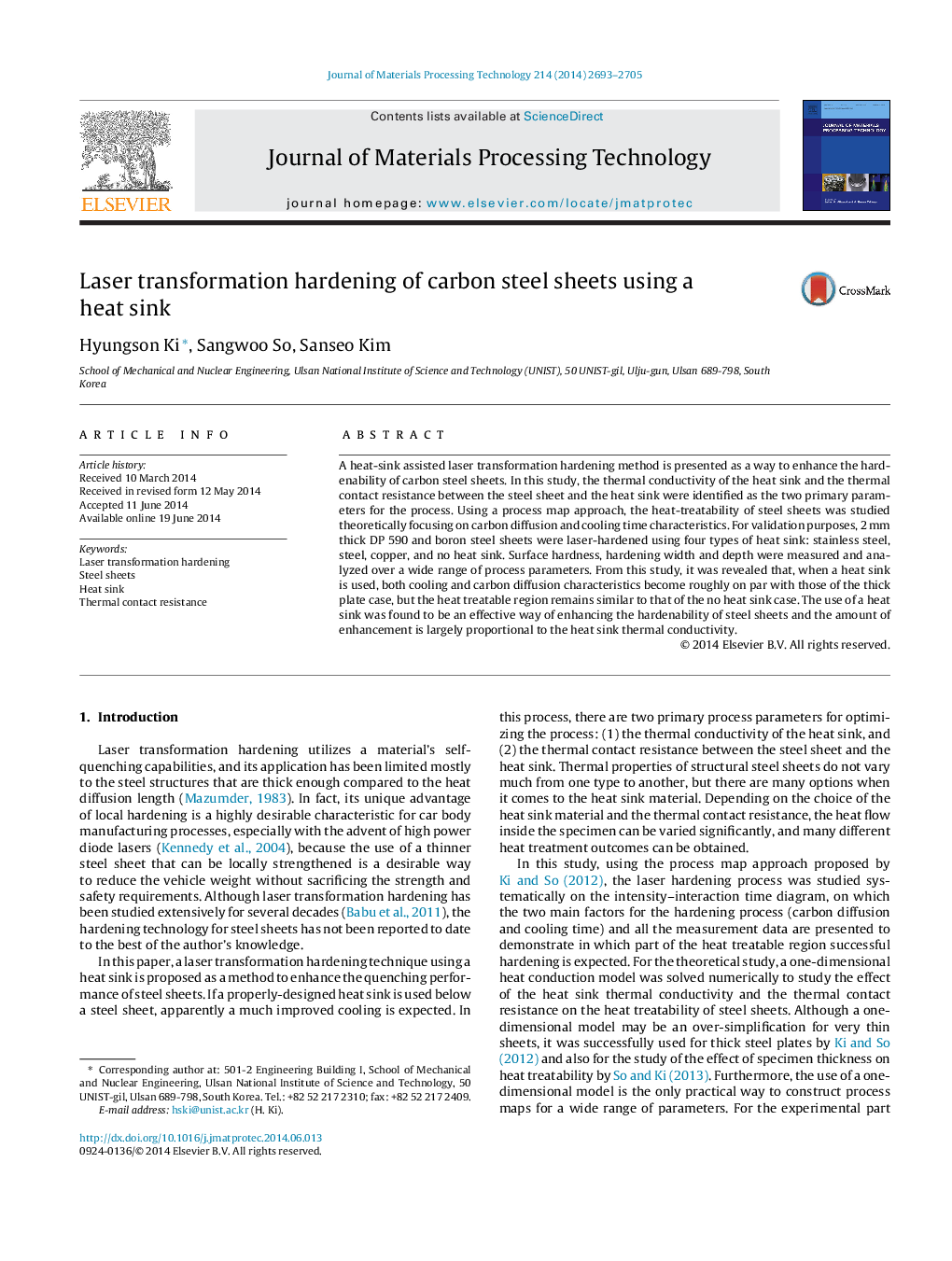| Article ID | Journal | Published Year | Pages | File Type |
|---|---|---|---|---|
| 10417404 | Journal of Materials Processing Technology | 2014 | 13 Pages |
Abstract
A heat-sink assisted laser transformation hardening method is presented as a way to enhance the hardenability of carbon steel sheets. In this study, the thermal conductivity of the heat sink and the thermal contact resistance between the steel sheet and the heat sink were identified as the two primary parameters for the process. Using a process map approach, the heat-treatability of steel sheets was studied theoretically focusing on carbon diffusion and cooling time characteristics. For validation purposes, 2Â mm thick DP 590 and boron steel sheets were laser-hardened using four types of heat sink: stainless steel, steel, copper, and no heat sink. Surface hardness, hardening width and depth were measured and analyzed over a wide range of process parameters. From this study, it was revealed that, when a heat sink is used, both cooling and carbon diffusion characteristics become roughly on par with those of the thick plate case, but the heat treatable region remains similar to that of the no heat sink case. The use of a heat sink was found to be an effective way of enhancing the hardenability of steel sheets and the amount of enhancement is largely proportional to the heat sink thermal conductivity.
Related Topics
Physical Sciences and Engineering
Engineering
Industrial and Manufacturing Engineering
Authors
Hyungson Ki, Sangwoo So, Sanseo Kim,
